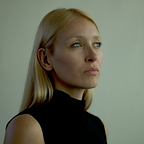A New Way of Living Together by Jamiee Williams
This is a summary of Jamiee Williams’ speech at ‘Museums Facing Extinction’ Conference on November 16th 2020.
To ensure that people and planet are side by side and equal, we need to design inclusive, circular, and sometimes digitally enabled solutions. This is where culture comes into play, as an essential pillar that aims to build community while learning how to inspire and engage people worldwide.
Jamiee Williams (aka Jamieemaw on Medium), previous architectural lead at SPACE10 in Copenhagen, gave us insights on shared-living and the benefits from it. In the model developed by SPACE10 and EFFEKT Architects, everything is shared “from sharing space to finance, energy, food, mobility, and even skills and services as well.”
SPACE10 is a research and design lab based in Copenhagen that aims to enable a better everyday life for people and the planet. Their office and working method is very open and collaborative and acts as an innovative interface for IKEA. SPACE10 itself allows the team to explore and experiment with everything from new ways to grow food, manufacturing methods, and spaces to test and try new technologies. The project ranges from exploring the future of food and mobility to how we can look at creating new energy systems and build communities both digitally and physically as well. The output also ranges from physical prototyping to online reports and creating speculative visions as well.
Shared living has high prospects for being a great way to tackle some of the global challenges that we face. Some of these challenges listed by Jamiee include:
- Rapid urbanization
- Unsustainable building practices
- Unaffordable housing
- Ageing population
- Loneliness
When carefully considered, you will discover that all of these problems are very complex and systemic. This led the project to consider creating something engaging, playful, and accessible that allows you to gain insights from a broad spectrum of people, which can help inform your decision-making process moving forward.
This pushes us to begin with research that prioritizes the combination of affordability, livability, and sustainability into one fully integrated solution. It was essential to making provision for private and public spaces so that people can enjoy a social lifestyle and the perks of living in a community while having the option of being in a private home whenever they want to.
The private spaces were designed in a way that integrates sustainability, making it an easy part of your daily life in ways such as:
- Growing and harvesting your food
- Using solar energy
- Integrating composting
Beyond just connecting you with your neighbours, this can move you to communicate with your surrounding community, including local businesses.
As we advance and consider the complex shifts around us, we can understand how to begin co-creating strategies with a strong network of partners with the hope of engaging a new generation of climate leaders who can share impactful ideas and knowledge to help instigate behaviour change and demand products and services that are climate-focused.
SPACE10 collaborated with museums, such as the London Design Museum. Two years ago, the museum hosted an exhibition on the future of living to create a multidisciplinary approach to the exploration of such a subject. The entire process implemented immersive digital installations, physical setups that acted as a one-to-one scale, apartments, and different visual reports. The museum was essentially used to gather insights, allowing people to include their knowledge in the survey.
